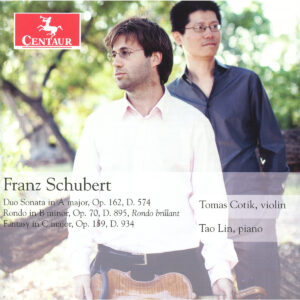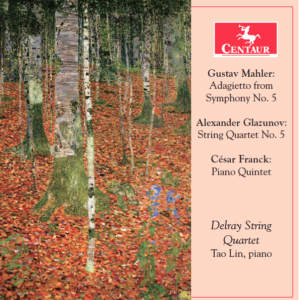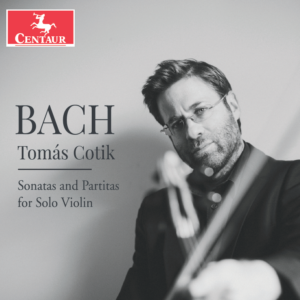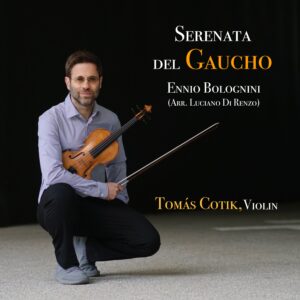The Harrington Quartet (Tomás Cotik & Keith Redpath, violins; Jennifer Kozoroz, viola; Emmanuel Lopez, cello, along with violist James Dunham, are right on target in each piece. I can't imagine a …
Mendelssohn Quintets
Read More
Buy this album
Mendelssohn String Quintet in A Major op. 18
At the Mendelssohn home, performing chamber music was an integral part of its ethos. In the 1820’s, the family established a tradition of Sunday afternoon musicales where all the Mendelssohn children were featured as performers. These were also among the most important social events in the cultural life of Berlin. It was not unusual for musical and literary luminaries of the day, such as Karl Maria von Weber, Ludwig Spohr, Heinrich Heine and E. T. A. Hoffman, to be invited to the Mendelssohn’s for an afternoon of music. At these soirees, they all expressed admiration for young Felix’s musical genius and were treated to some of his most notable early compositions.
Mendelssohn composed his A major String Quintet Op. 18 in 1826, the same year that also saw the composition of his Octet Op. 20 and the Overture to A Midsummer Night’s Dream. Following the tradition established by Mozart, Mendelssohn used the same instrument combination by adding an extra viola to the string quartet format. The work went through significant changes prior to being published in 1832.
The character of the first movement, Allegro con moto, remains transparent and lyrical throughout. The first theme conveys a feeling of lightness in the first violin grounded by quarter-note support in the lower voices. The second theme contains echoes of Beethoven’s String Quartet Op. 18 No. 4 first movement, first closing theme, with emphases in the second beat marked forte. It provides a strong arrival and highlights contrasting qualities with the first theme. The Development evolves primarily with first theme material. However, Mendelssohn adds drama to the texture by inserting triplets, sixteenth-note runs and arpeggios. In the Recapitulation, the transition between first and second themes is omitted and the second theme is initially carried by the cello line.
Mendelssohn wrote the Intermezzo in 1832 just before publication by Simrock, in memory of Eduard Rietz, who had been his violin teacher in Berlin and who had recently died in January of that year. It is in F Major and it conveys a serene hymn-like character.
The Scherzo marked Allegro di molto is a fugal study and it resembles the Scherzo of the Octet Op. 20 in character, dynamics and articulation (pianissimo and sempre staccato).
In the final Allegro vivace, Mendelssohn may have drawn inspiration from Beethoven’s last movement of String Quartet Op. 18 No. 1 where Mendelssohn also uses duple meter and similar thematic material in the first theme of the Exposition (sixteenth-note triplets). However, Mendelssohn goes further by adding a double fughetta in the Development. The first subject is taken directly from the first theme of the Exposition but this time it centers in D Major (subdominant). The second fugal subject is a transformation of the Exposition’s second theme which will remain in the dominant E Major.
Mendelssohn String Quintet in B flat Major Op. 87
Nineteen years would pass before Mendelssohn composed his second string quintet. By this time, he has become one of the most famous composers in Europe. He has written the bulk of his string quartet oeuvre as well as the “Scottish” and “Italian” symphonies and several volumes of “Songs without Words”, to name a few. His performances in Europe have brought him legendary status as one of the finest virtuoso pianists of the age. As conductor, his prestige has grown ever since his revival of Bach’s St. Mathew Passion
in Berlin in 1829. He has traveled to England several times to perform and conduct. He has met Robert and Clara Schumann and developed a meaningful friendship and professional relationship with them. In 1843, Robert Schumann assisted him in establishing the Leipzig Conservatory developing a curriculum of studies worthy of the most prestigious academies in Europe. He has married Cécile Jeanrenaud, and has begun to raise a family.
Composed in 1845, the B flat quintet is among the finest of his chamber works. Although its conception is texturally more orchestral than the A Major, it retains similar formal and structural qualities as its predecessor. However, in the first movement, Allegro vivace, Mendelssohn’s treatment of sonata form is more adventurous and unrestrained than earlier works. In the Exposition, the first violin commands the principal theme with a heroic character reminiscent of the “Italian Symphony”. The forte dynamic and tremolo texture in the lower voices evince drama and expectation throughout. In spite of a long and rhythmically pervasive transition which would expect the listener to prepare for a secondary theme, Mendelssohn returns to the principal theme again in B flat as if to reaffirm its validity. Soon after, a new and lyrical second theme in F major is introduced by the first viola. The long Development interpolates both themes in its texture. The triplet figurations convey forward motion throughout and they also provide a sense of foreboding which culminates in the Recapitulation with the second violin as the protagonist.
The second movement, Andante scherzando is in G minor. There are imitative sixteenthnotes in stretto, which give the melody fluidity and pace aided by pizzicato textures to convey a character of elegance and lightheartedness. The Adagio e lento contains some of the most dramatic and beautiful conceptions of vocal characters. The first violin lines are lyrical and at times, recitative-like. The lower voices also share in the melodic contour throughout the movement. In the Recapitulation for example, the cello takes over the secondary hymn-like melody which had been stated by the first violin in the Exposition. In spite of the movement being in D minor, Mendelssohn writes the last seventeen bars in D Major adding a fortissimo dynamic to highlight the climax. The beauty and poignancy of the end, fulfills this solemn, prayerful movement, in which Mendelssohn excelled.
The final Allegro molto vivace, begins in an explosive display of sixteenthnote runs in the first violin, underlining its triumphal character. In the middle section, Mendelssohn introduces fugal characters, blending elements of the principal theme into its counterpoint.
Emmanuel Lopez
Read More
Listen Album
Reviews
These performances are surprisingly good. The players bring a feeling of youthful freshness, even innocence, to the first of the two quintets, investing Mendelssohn’s score with a great deal of charm.…
This is a wonderfully relaxing recording. Imagine you're a string player, and you've invited friends over to the house to play chamber music. A glass or two of wine, and we pull out some Mendelssohn…
Mendelssohn, how it's supposed to sound! Musically this is an impressive achievement. The playing is both idiomatic and technically impeccable, never rushed and therefore unforcedly charming in the fi…
The performance is tautly disciplined. The focus of the music is always spot-on. The tone quality of each instrument is solid. It is a rare combination to hear a performance this controlled which does…
...thrill audiences with the exuberance of their playing....The results are simpy wonderful... There is lightness and economy of purpose in the first violin’s melody, grounded by quarter-notes in the …
“
The joyful virtuosity and stylish musicianship that Tomas Cotik and Tao Lin brought to their superb cycle of Schubert’s violin-and-piano works for the Centaur label happily permeate their cycle of Mozart’s sonatas
Gramophone Magazine
“
we can confidently be guided by these sublime interpretations of high musical quality, technically brilliantly executed, and demonstrating an impressive insight into what this music is capable of even in transcribed form… The recording, once again made at Portland State University in Oregon, is again a gem. Cotik has certainly not done things by halves in this regard either, as he also served as the producer and recording engineer
Opus Klassiek
“
The comparison of the 4 Seasons with the legendary recording of the Kremerata Baltica and Gidon Kremer is not quite so blatant, but in the end I still prefer the Cotik recording because of its rhythm and its colors, which are more genuine, richer and more finely differentiated than what I hear in the Kremer recordin
Pizzicato
“
Everyone who plays these works should hear these exemplary performances…you will never hear these Telemann Fantasias played so well
American Record Guide
“
These versions are unabashedly driven, backed by a slick technical ability, yielding a bold, fleet, forthright ride through the challenging yet rewarding contours of these mixed modes, occasionally dance-infused, and forward-looking Fantasias.
Early Music Review
“
Cotik’s performances throughout are clean, bright and precise… you would be hard-pressed to find a more honest guide than Tomás Cotik.
Palm Beach Arts Paper
“
urgently recommended
Fanfare Magazine
“
It is in excellent hands with the violinist Tomás Cotik… because a musician of great size is ‘talking’ here, as witnessed by his earlier recordings, which extend from Telemann, Bach and Schubert to Piazzolla. Thanks to the idiomatic touch, Cotik really makes this music swing, but he also knows how to hit the lyricism in the slow parts. This is ‘entertainment’ on a high level
Opus Klassiek
“
one comes away from the recording dazzled by Cotik´s musicianship and technique; one is also struck by the agility of his execution, his expert command of tempo and intonation, and his ability to consistently maintain the highest level of performance
TEXTURA
“
´What a Performance 2020´ Award Winner
THE ART MUSIC LOUNGE



